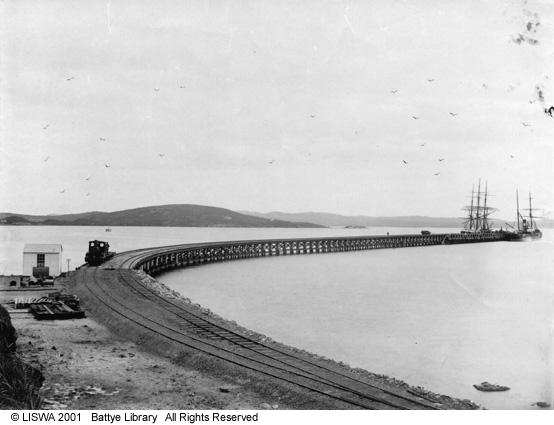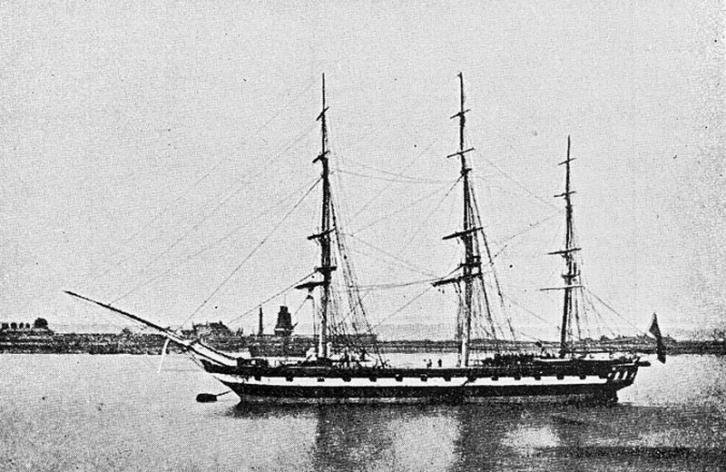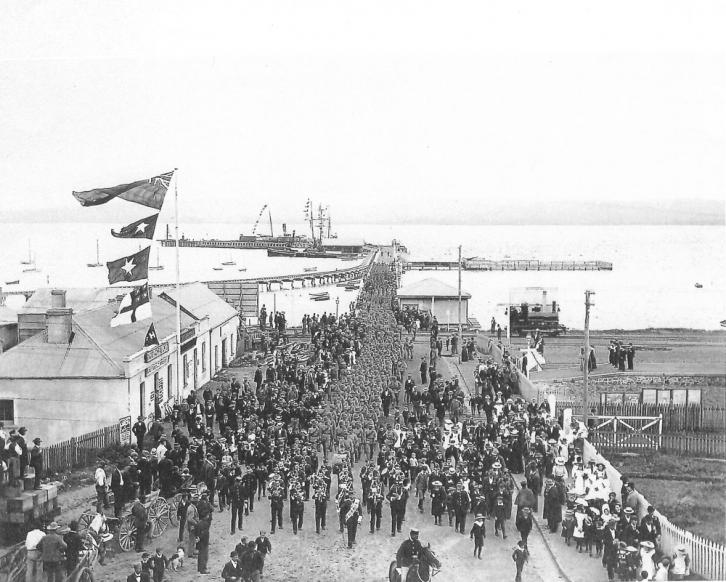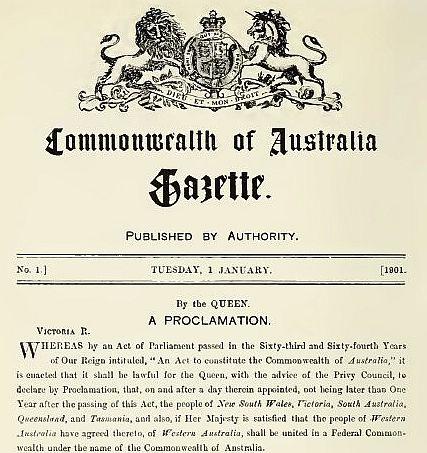Historical Timeline

The jetty was completed in October 1888, declared ready for receiving ‘mail steamers or vessels of any class’ and was formerly opened on 1st June 1889, although ships had been using it since October 1887.
Government declared the jetty an official landing place from 1st January 1889, and appointed a Tide Waiter (customs officer) to now collect duty.

In March the jetty was extended by 121m. The extension consisted of an arm which curved towards the south east. The last 70m was 10m wide. A railway line was also built along the east side of the old jetty and onto the jetty extension.
The number of ships calling at the Port in the 1880s increased and the Albany Town Jetty had a lack of berthing room.
The jetty was further extended with a curved arm toward the south east.

On 2 December, Albany man Captain William Douglas purchased the former North-East coast wooden hulled 2 cylinder compound engine screw tug ‘Dunskey’, which was built in 1891, of 52 tons and 18ft (5.5m) in length. She arrived in Albany on 24 December. Douglas sold her to Armstrong and Waters of Albany, in August 1901.
She had many memorable incidents where ships in distress were assisted. She was also used to ferry troops to ships during WWI. During a squall on 10 March 1917, she was leaking and was beached on the bar at Wilson's Inlet, broke up in thirty minutes and was totally wrecked.

The frigate ‘Saint Lawrence’ was launched in March 1861 as a fully rigged ship by T. & W. Smith. She had two decks, with tonnage of 1,131 gross and a length of 179.1ft (54.6m). In 1878, damage repairs were carried out, and the rig was altered to that of a barque.
In the command of Captain Thomas Brodie she was struck and damaged by a storm off Cape Leeuwin en route from Newcastle to Fremantle. She turned and ran for Albany and was sighted by the Breaksea Island lighthouse keeper on the morning of 25 March 1889 and towed into port that night.
The cargo of coal was discharged and sold locally. The barque was subsequently sold to John Moir and Co. of Albany, for use as a hulk. The hulk was hired by the Adelaide Steamship Company from 1890 to 1893.
“An auction of the hulk 'Saint Lawrence' built of teak, copper fastened, well found with boiler, winch, derricks, anchors, chains, and general gear. Now at anchor at Albany" was the advertisement of 1 November 1898.
In late 1898 the hulk caught fire, was abandoned and sank in Princess Royal Harbour. During port dredging operations in 1977 a burnt wooden wreck was located and is believed to be the remains of the ‘Saint Lawrence’.
Further additions included the construction of a railway and viaduct along the east side of the jetty and jetty head. A railed-in footway was built along the east side from the shore to the curve in the jetty with openings for access to the water.

The First (Mounted Infantry) Contingent of Western Australia – Her Majesty’s Imperial Forces, left from Albany aboard the Troop Transport SS ’Medic’ on 7 November to the South African Conflict (Boer War). The 129 men joined others from Victoria, South Australia and Tasmania.

In August ‘first port of clearance’ status was given to Fremantle in preference to Albany, a move seen by many as a political ploy led by Premier Sir John Forrest prior to Western Australia voting to join the Commonwealth of Australia in 1901.
Captain Frank Winzar was Harbour Master 1900-1917

There were 411 ship visits in 1901. More than 50% of these visits were for bunkering coal only. This meant that less than 200 vessels loaded or discharged cargoes.
With the colonies joining the Federation, Customs functions passed to the Commonwealth of Australia Customs under the Customs Act 1901.
